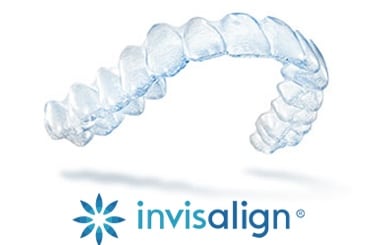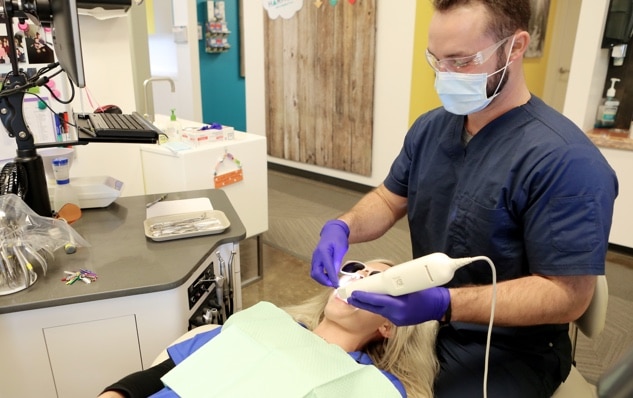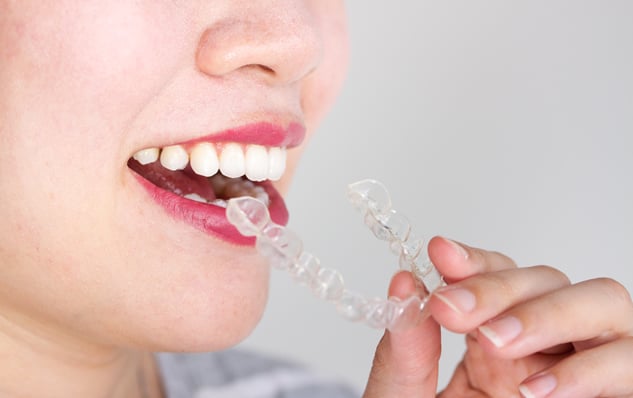Brushing and Flossing


Brushing and flossing is crucial for effective dental care, according to our experts, Drs. Gaby and Hardin and their team at Harmony Orthodontics. This able team ensures that our patients keep healthy, radiant smiles by brushing and flossing. It is one of the preventive steps you can do at home to lessen dental decay and avoid losing teeth.
The goal of brushing and flossing is to reduce the accumulation of food particles to avoid plaque formation.
Plaque is generated when food particles accumulate in your braces and between teeth. This accumulation causes more germs in your mouth to populate, which can result in gingivitis, dental decay, and even tooth loss. Such situations, however, are uncommon if you maintain a daily regimen and pay close attention to getting your braces and teeth hygienic. Brushing and flossing regularly can reduce the amount of plaque that gets missed.

Brushing

Brushing and flossing your teeth becomes even more crucial during orthodontic treatment, regardless of whether you wear braces or Invisalign. And below is how you do it right:
The medical professionals on our staff advise using fluoridated toothpaste and a soft-bristled toothbrush. When brushing your teeth, make short, tight circular movements with the toothbrush over each tooth, in the spaces around your braces, and finally between your teeth. You can reach any food particles that may be below your gum line by tilting the toothbrush at an inclination.
When cleaning your teeth, it’s vital to take your time, be mindful of brushing away from the gums, and avoid being in a rush. When brushing away from the gum line, you should brush your upper teeth “south” and your lower teeth “north.”
Maintaining a clean, healthy mouth includes cleaning your tongue and the top of your mouth cavity.
We advise cleaning your teeth four times daily when commencing treatment with orthodontics like Invisalign or braces to prevent food from getting stuck between the wires. It would be best if you cleaned your teeth during these instances:
- After breakfast
- Right after lunch
- After dinner
- Just before going to bed
Due to the damage that braces do to your toothbrush’s bristles, you’ll also find that you’ll need to change it more regularly. Take your time, and attempt to get below your archwire to those hard-to-reach places. Use mouthwash and fluoride treatments both during and after your orthodontic treatment, after using water to rinse.
Flossing

Regardless of whether they are visiting an orthodontist, brushing and flossing is one of the most frequently overlooked components of oral treatment for most people. We encourage flossing to all our patients who visit our locations in the Gresham and Sandy City areas since it is one of the best techniques for cleaning the area around and between your teeth that a toothbrush finds challenging to access. While flossing daily has substantial perks for the condition of your teeth and gums, it does take more time while you have braces on.
Our office provides reusable floss threaders to patients so they can reach under the archwire. Thread a brief length of floss through the threader. Feel how clean each tooth becomes as you move the thread up and down across them. Never hasten the act of flossing or use excessive force on your archwire. After meticulously and gently flossing in and out of your braces, do the same for the remaining part of your gums and teeth.
Additionally, remember to take care of your teeth, especially your molars. Gum bleeding when you first begin flossing with braces is natural. During your subsequent appointment, let a staff member know if the bleeding persists or is uncomfortable in an unusual way.
If You Have Any Questions, Don’t Hesitate to Contact Us!

Please call us if you have any special queries about brushing and flossing during your treatment. Dr. Gabriela Aranda & Dr. Tod Hardin, their teams of medical professionals, and their support personnel are happy to address your concerns and ensure you are content and at ease with your care.
